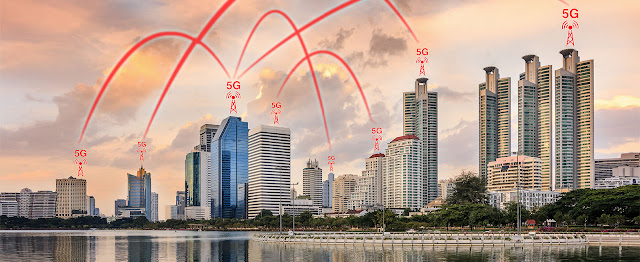IEEE as of late held its Brooklyn 5G Summit – which for every single down to earth reason gives a report on the present status of 5G from a specialized, organization and business case point of view.
While eagerness remains overwhelmingly high – there was a preventative air to the occasion with respect to what precisely is 5G in these early organizations. Is it true at least 5g like 4G+, 4.5G or maybe even 4.9G?
The objectives of 5G are exceedingly driven – giving end clients – whether human or machine – with an exceptionally solid, secure and flexible system that will convey correspondence benefits anyplace and whenever, over any entrance innovation, on any gadget. Likewise, the vision of the 5G organize is to convey administrations that are logical, customized, responsive and progressively; giving clients a predictable ordeal.
The three noteworthy use situations characterized for 5G incorporate (1) improved portable broadband; (2) ultra-solid and low inactivity interchanges; and (3) gigantic machine sort correspondences.
The test for 5G is building a system that can bolster the fluctuated necessities of each of the key use situations. This will expect administrators to completely grasp virtualization and cloud innovations. And keep in mind that help for every one of the three utilization situations is the long amusement for 5G, the requirement for quicker versatile broadband rates is bringing about a slight move in heading for 5G benchmarks.
Improved Mobile Broadband Leads the Way
The greater part of the 5G institutionalization work has focused on the upgraded portable broadband (MB) utilize case, which is the concentration of 3GPP Release 15 (otherwise called 5G Phase 1). Truth be told, so as to meet the forceful 5G organization timetables of a modest bunch of administrators, 3GPP optimized the Non-Standalone (NSA) 5G New Radio (NR) particular in the help of portable broadband administrations to the finish of 2017, as opposed to the center of 2018, keeping in mind the end goal to take into account 5G arrangements as ahead of schedule as 2019. The independent mode is still on track for mid-2018.
- NSA 5G NR will use the current LTE radio and center system as a grapple for versatility administration and scope while including another 5G transporter. This is the arrangement that will be the objective of mid-2019 organizations (in 3GPP phrasing, this is NSA 5G NR sending situation Option 3). NSA operation requires accumulation of LTE-band and NR-band by means of double network
- Independent (SA) 5G NR infers full client and control plane ability for 5G NR, using the new 5G center system design likewise being done in 3GPP Release 15.
This quickening in the guidelines is expected to meet the consistently expanding requests of worldwide versatile broadband. As per the latest Cisco Visual Network Index: Global Mobile Data Traffic Forecast Update (2016-2021), the normal buyer's cell phone is relied upon to devour near 7GB of information for each month in 2021 up from 1.6GB of information for every month today. What's more, developing video-concentrated utilize cases like increased reality and virtual reality and in addition the normal development of portable broadband in vehicles make it reasonable why the 3GPP has quickened the 5G NR timetable to make utilization of the improved versatile broadband advantages of 5G NR sooner, while tending to the bigger vision of 5G NR in 2020 and past.
A case of the arranged advancement of the versatile system towards 5G making these between time strides is demonstrated as follows:
Advancement Rather Than Revolution?
While this emphasis on improved versatile broadband has fulfilled the close term wishes of a modest bunch of administrators, there is additionally a developing unexpected that trusts the business is extremely simply expanding 4G capacities with new range and new radio – when 5G, as imagined by IMT-2020 and NGMN, is extremely around a completely new system design.
Truth be told, a few circles trust the current 5G way will bring about innovation that is problematic or just mostly enhanced, bringing about a wasteful speculation.
Why move to 5G when the objectives of quicker speeds and enhanced dormancy can be accomplished with LTE and its variations – LTE-Advanced (LTE-An) and LTE-Advanced Pro (LTE-A Pro)? Both of these help transporter total and higher request MIMO procedures, while LTE-A Pro use both authorized and unlicensed range, expanded quantities of receiving wire ways and a multi-shaft approach. Also, it can essentially build arrange limit with no extra range or base stations and offers expanded battery life of 10x more prominent than LTE.
The key characteristics that characterize LTE-A Pro are:
- Information speeds in overabundance of 3Gbit/s (LTE-A: 1Gbit/s)
- 640MHz of bearer data transmission (LTE-A: 100MHz)
- Inactivity: 2ms (LTE-A: 10ms)
While not exactly the objectives of what has been proposed by NGMN and ITU-T IMT-2020 for 5G, they offer a noteworthy change over current LTE arranges and in addition a stage for the conveyance of new administrations to new markets as the business moves towards IoT with 5G.
LTE-An and LTE-A Pro have a long arrangement lifecycle ahead given the present sending measurements from GSA, outlining that there stays critical development opportunity left in LTE:
- 591 systems in 189 nations are putting forth business LTE benefit toward the finish of 1Q17.
- 195 administrators in 95 nations have propelled LTE-An or LTE-A Pro systems
- 19 administrators have propelled LTE-A Pro systems, with an extra 26 in trial
Current downlink speeds over these LTE-An or LTE-A Pro systems go from 100Mbit/s to more than 1Gbit/s as demonstrated as follows.
5G Hype Cycle
The market has made a considerable measure of buildup encompassing 5G. Indeed, one could contend that the business is plainly in the 'pinnacle of swelled desires' territory of the buildup cycle. On account of both South Korea and Japan, their surge towards 5G is driven by the Olympics and they want to use versatile advances to give an unparalleled survey understanding to those in participation and whatever remains of its worldwide crowd.
In different markets, it is about first to showcase situating with an end goal to catch supporters. For instance, AT&T reported that 20 markets would profit by its 5G advancement arranges before the finish of 2017. The main issue: they are in fact LTE-A Pro, not 5G. In any case, they are not the only one. As per GSA, 18 administrators have declared plans to dispatch pre-standard 5G administrations.
Notwithstanding the semantics, genuine 5G administrations and systems – in view of the vision of NGMN and ITU-T IMT-2020 – will require significantly something other than new radios and receiving wire frameworks, however a system that is flexible, programmable and progressively reasonable, with NFV and SDN at its establishment and cloud local.
Meanwhile, the industry is finding a way to establish the framework for 5G, with the brunt of the work left for 3GPP Release 16.
Maybe NTT DoCoMo's CTO Seizo Onoe's forecast is correct that the remote business just figures out how to accomplish awesome jumps in innovation in much number ages –, for example, 2G and 4G.
All things considered, maybe 6G is extremely the new 5G.















No comments:
Post a Comment